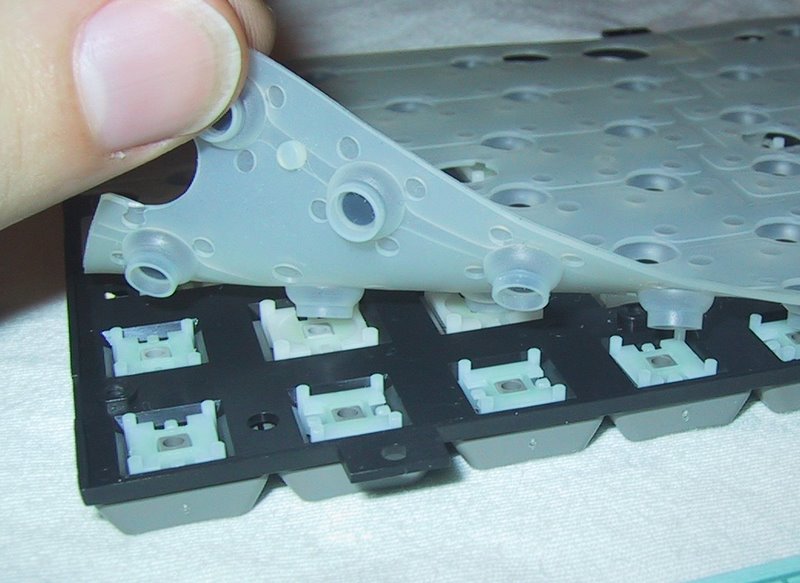How Membrane Switches Are Used to Improve Safety and Performance in Machinery
How Membrane Switches Are Used to Improve Safety and Performance in Machinery
Blog Article
Why Membrane Switches Are Necessary for Sturdy Control Equipment
Membrane layer buttons play a pivotal function in making sure the toughness and dependability of control systems across numerous industries. Their unique construction permits them to sustain difficult ecological factors such as moisture, temperature level extremes, and physical wear. This durability not only prolongs the life-span of the systems they offer however also decreases maintenance needs. As we explore the complex advantages of membrane buttons, it ends up being noticeable that their relevance transcends plain performance, influencing user experience and functional effectiveness. What further effects do these attributes hold for the future of control system style?
Overview of Membrane Buttons
Membrane layer switches are flexible and dependable components commonly used in different electronic control systems. The graphic overlay offers both useful and aesthetic design, while the spacer layer guarantees that the switches are triggered only when pushed.
Membrane layer switches are commonly preferred in applications calling for a small and lightweight design, making them perfect for handheld tools, medical equipment, and industrial equipment. They can be tailored to meet details customer demands and can integrate different features such as backlighting, tactile responses, and several colors. Additionally, membrane switches are resistant to dust, moisture, and impurities, making them ideal for atmospheres where durability is vital.
Advantages of Longevity
In lots of applications, the sturdiness of membrane switches over offers substantial advantages that enhance their total efficiency and integrity. These switches are created to hold up against rough atmospheres, making them perfect for usage in demanding problems such as high moisture, extreme temperature levels, and exposure to chemicals. Their durable building assists to avoid damages from physical impact, making sure long-lasting functionality and lessening the requirement for constant replacements.
Additionally, membrane switches are immune to damage, which is essential in applications where constant communication happens. This durability equates to decrease maintenance expenses, as organizations profit from reduced downtime and fewer solution interruptions. Furthermore, the encapsulated style of membrane layer switches secures internal components from dirt and dampness ingress, additional adding to their life-span.
Another advantage is their capacity to keep consistent performance in time. With a high tolerance for mechanical anxiety, these switches protect their tactile comments and electric stability, ensuring user satisfaction. Ultimately, the sturdiness of membrane layer switches over not just boosts operational effectiveness yet additionally cultivates self-confidence in their reliability, making them a favored option for control systems across different industries.
Applications in Different Industries
Resilient control systems utilizing membrane layer buttons locate considerable applications throughout an array of industries, each benefiting from the distinct qualities these switches use. In the clinical market, membrane buttons are crucial for tools such as person monitors and analysis devices, where dependability and ease of cleansing are extremely important. Their resistance to wetness and pollutants guarantees they preserve functionality in clean and sterile environments.
The automobile industry leverages membrane layer switches for control panel controls and infotainment systems, where they offer sleek, inconspicuous interfaces that boost customer experience. These buttons are likewise designed to hold up against extreme conditions, consisting of direct exposure to extreme temperature levels and vibrations.
In commercial settings, membrane buttons are typically made use of in machinery control board, offering tactile responses and toughness necessary for high-usage applications. Their capacity to resist chemicals makes them suitable for manufacturing atmospheres where spills and contaminants are regular.

Consumer electronics, such as kitchen area devices and remote controls, likewise make use of membrane layer buttons for their versatility and cost-effectiveness. In general, the versatility and durable nature of membrane layer changes make them crucial across various markets, making sure effective procedure and long life in control systems.
Layout and Aesthetic Allure
While functionality is critical, the style and visual allure of control systems outfitted with membrane switches play a critical role in user involvement and general experience (membrane switch). The aesthetic style of these buttons can dramatically affect customer understanding and interaction. A well-designed membrane switch improves the attractiveness of the gadget, making it extra enticing to customers and cultivating a link in between the customer and the item
Membrane layer switches over supply a lot of flexibility in design, allowing manufacturers to tailor graphics, colors, and structures to line up with brand identity and item aesthetic appeals. The usage of vivid shades and unique patterns can draw attention, while tactile feedback can reinforce the customer's communication with the device. In addition, the ability to incorporate LED signs and backlighting into the membrane button style provides both useful and visual benefits, boosting exposure and use in numerous settings.

Enhancing Customer Experience

Moreover, membrane switches can be personalized to integrate visual interfaces, improving functionality by offering details in a clear and instinctive fashion (membrane switch). This customization can include symbols, tags, and shade coding that guide customers via complicated functionalities with ease. Additionally, their flexibility enables combination in different environments, making certain regular efficiency whether in commercial equipment or consumer electronics
The longevity of membrane switches also plays a crucial role in user experience. By withstanding harsh conditions and prolonged use, these switches reduce the chance of system failings, therefore advertising integrity and customer self-confidence. Eventually, the tactical use of membrane layer switches over not only boosts capability however also significantly improves user interaction with control systems, making them an important component in modern-day style.
Conclusion

Report this page